Projects, Internships & Initiatives
Follow the links below to jump to sections.
Active Projects · Past Projects · Internships · Initiatives That Samantha Loves To Support Whenever Possible
Active Projects
Music & Mission Road Trip: Enabling Youth Leadership through Music
Co-Director · Portland, OR · June 2023 - present
Lead high school and college-aged students through a six-week travel program in the Pacific Northwest United States. Program focuses on increasing intentional decision making, internal motivation, and team leadership through music. I supported the pilot program in 2023 and am developing plans for 2024. Responsibilities include guiding team building exercises, logistic management, and student mentorship.
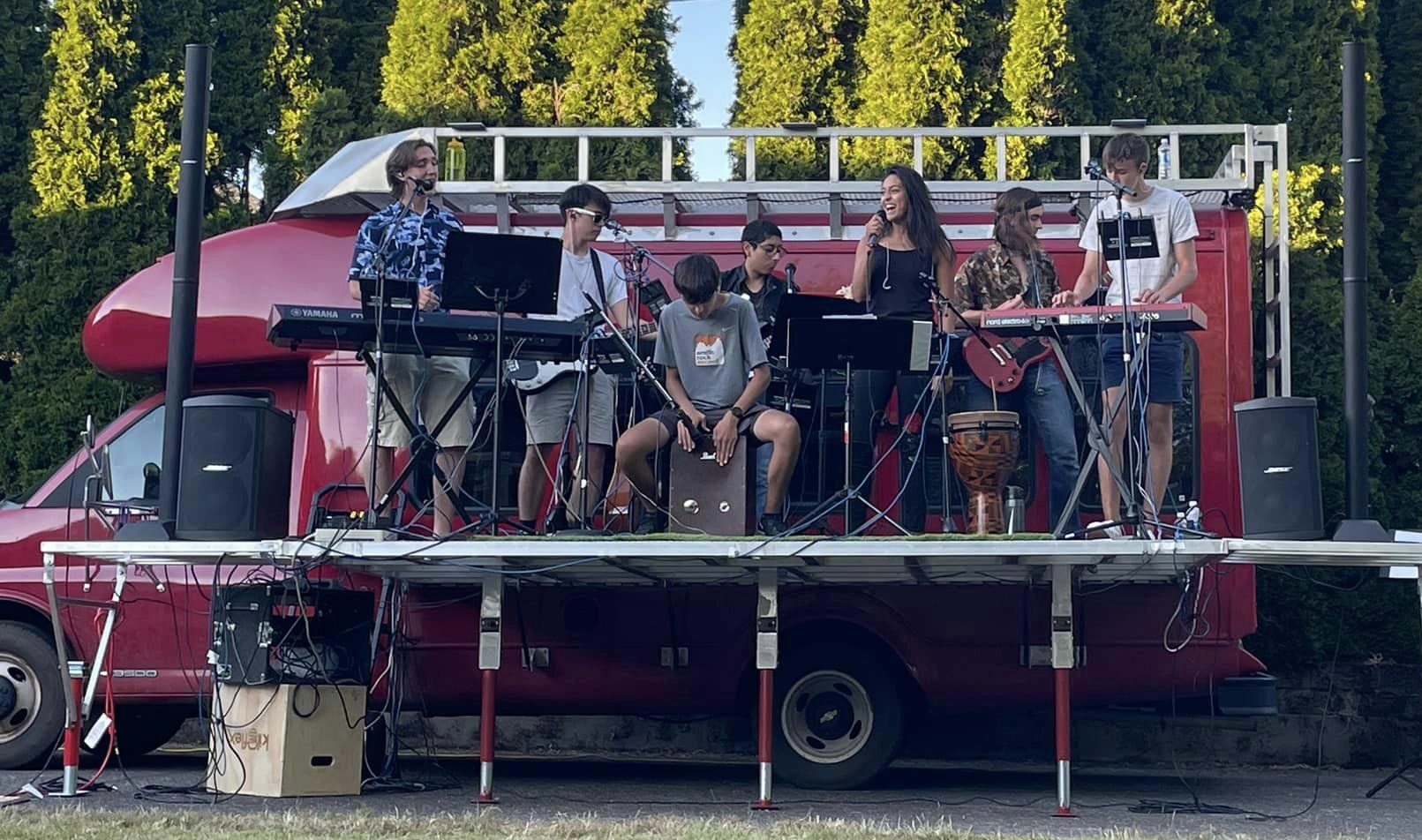
Homeward Bound Leadership Initiative Member HB6
Selected to join the Homeward Bound leadership initiative, a fortified network of non-binary and women leaders with a STEMM background taking actions with positive impact for our planet. Members from all sectors: top academics, government representatives, non-profit agents, and corporate administrators, all collaborate through one year of intensive online training and small-group project development. Initiative themes weave global climate change, equity, strategy, and visibility for self and science. Formal programming ends with a capstone 3-week expedition to Antarctica where members will strengthen connections, share inspirations, and bring years of foundational remote efforts into fruition. The initiative continues as alumni work in The Convergence network, thousands of competent leaders with impetus to create a better future together. Learn more about the HB experience here.
Diversity, Equity & Inclusion: Island Sky · LGBTQ+ Lead · Remote · December 2023 - present
After the Island Sky voyage to Antarctica this team is working closely with the Ushuaia expedition and Homeward Bound board to rectify issues of diversity, equity, and inclusion faced by both cohorts and alumni. Changes are to be made to Homeward Bound staff and program (virtual and in-person) to meet DEI standards and increase global relevance and positive impact of the project. I lead from my queer, youth, and low-income perspective alongside representatives of other arenas of diversity.
Changing Leadership Challenge · Critical Queer Chaos Demon · Remote · November 2023 - present
This initiative seeks to make global leadership more sustainably-minded and diverse by increasing the number, capabilities, and promotion of non-binary people and women in leadership positions. We aim to fundraise and infuse 100 million dollars into this effort. I am part of a duo team that developed goals to retain and promote non-binary people and women who already hold leadership positions. Additionally, I am part of a trio team structuring the foundational strategy map for the initiative. In my role as Critical Queer Chaos Demon I unabashedly stand for clear articulation and actualization of diversity, equity, and inclusion at all stages in the process.
Biodiversity & Health Working Group · Media Asset Creator · Remote · June 2022 - present
This group’s goal is to communicate why native biodiversity is vitally important to human health in alignment with the United Nations One Health initiative. We seek to not only to capture the public’s imagination with biodiverse and healthy lives, but to impart the dire impacts of loss of biodiversity to policy makers with the backing of public enthusiasm to create long lasting global change. I am part of a duo team that creates media assets and strategy for a social media campaign.
Water Working Group · Optimistic Aqua Future Weaver · Remote · April 2022 - present
The mission of this interdisciplinary and international group is to increase conversations about water conservation led by young children to improve community consciousness. I am integral in the development of impact, character, and story concept for a children’s book series focused on water.
Youth Ecology Education through Restoration
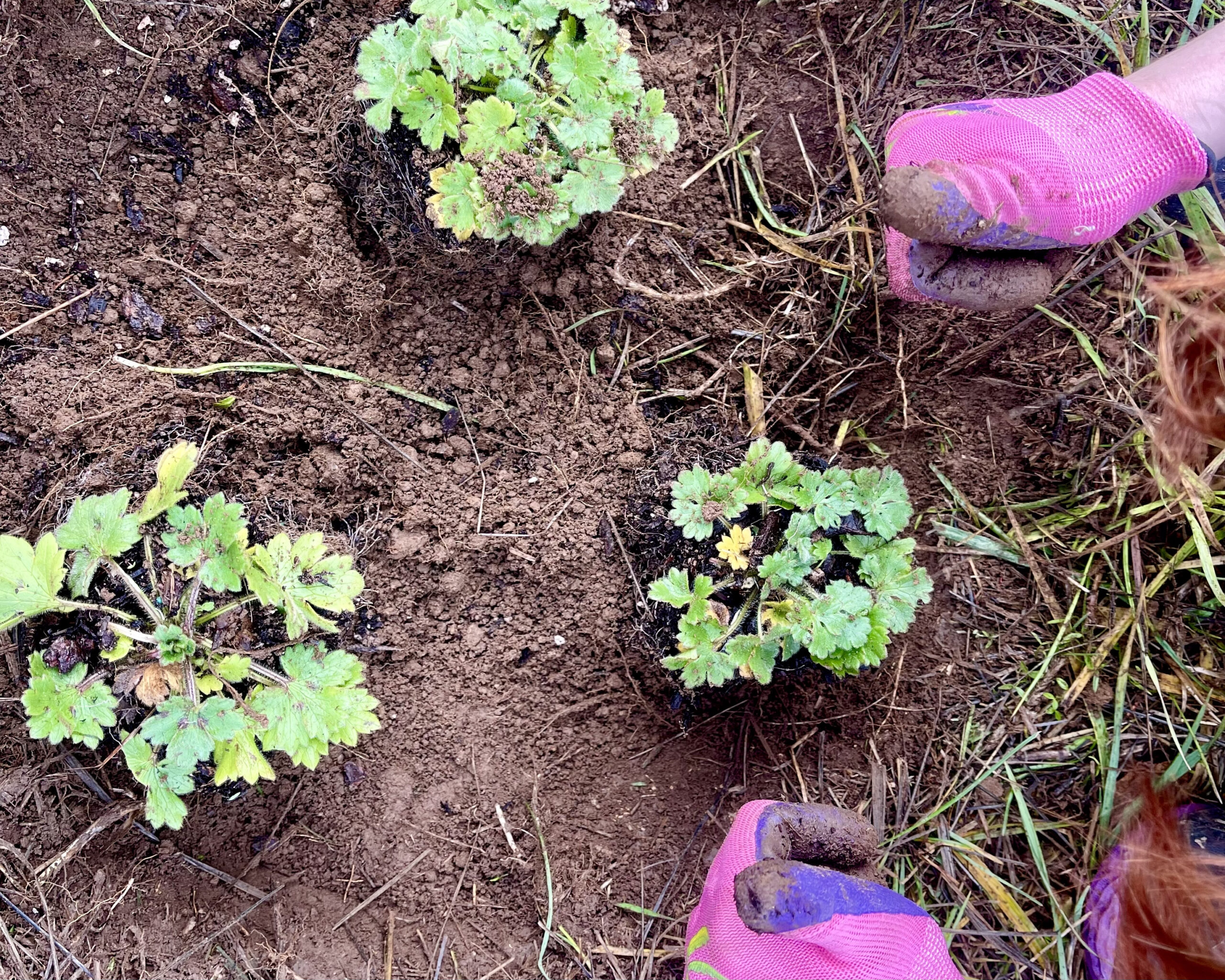
in partnership with Washington Native Plant Society, Capitol Land Trust & the Shelton School District
Supported since the two-year pilot of Youth Ecology Education through Restoration (YEER) program by partnering with teachers and students to increase local biodiversity and relationship to the land surrounding the southern Salish Sea. Stewards design and implement an estuary-adjacent restoration plot with students, encouraging curiosity and leadership for the natural world. As part of the United Nations Decade on Restoration this action seeks to have ecological and relational impact for generations.
Samantha Elie Botanist
Samantha Elie Botanist's goal is to inspire adaptive and legacy-minded community stewardship with accessible plant-based education. Researching and writing about the intelligence of our native plants and their ecosystem services then sharing with the public is refreshing against the doom-media of climate change. Samantha Elie Botanist aims to publish an optimistically pragmatic point of view: the world is changing and plants can make it a positive one.
Past Projects
Trailing Edge Fire Ecology Research
Study asks if the “Trailing Edge” zone of low elevation mountain forests will return to a similar species composition after severe wildfire, or into dry shrub or scabland under the influence of warming conditions. Understanding the “Trailing Edge” in WA State and elsewhere helps us locally observe and forecast species migration and climatic changes. These affect not only plant populations, but rangeland, game, birds, fish, insects, agriculture, fresh waterways, oceans, or in other words, total human quality of life and viability.
Data Technician · Olympia, WA · September 2022 - March 2023
Entered numerical data and field notes from 57 sampled plots over nine fire complexes. Identified unknown plants from photos and field notes. Organized data to show preliminary results. Utilized intermediate proficiency of Microsoft Excel and Google Sheets for data entry and transformation.
Post-Fire Regeneration Field Researcher · Multiple locations, WA · June - September 2022
Surveyed plant communities (all bryophytes, herbs, shrubs, and trees) recovering from wildfires across public lands in Washington State within the “Trailing Edge” climatic zone. Remote plots were located with a compass, Garmin GPS, Avenza and On X Hunt mapping applications. Pre-fire forest stand type was assessed by identifying and measuring burned snags and surviving trees in the plot. Timber salvage, thinning, or clearcutting activity on site was evaluated. Age, species, and density of regenerating conifer seedlings across plots were calculated. All plants were catalogued and percent cover was measured.
Haki Farmers Collective
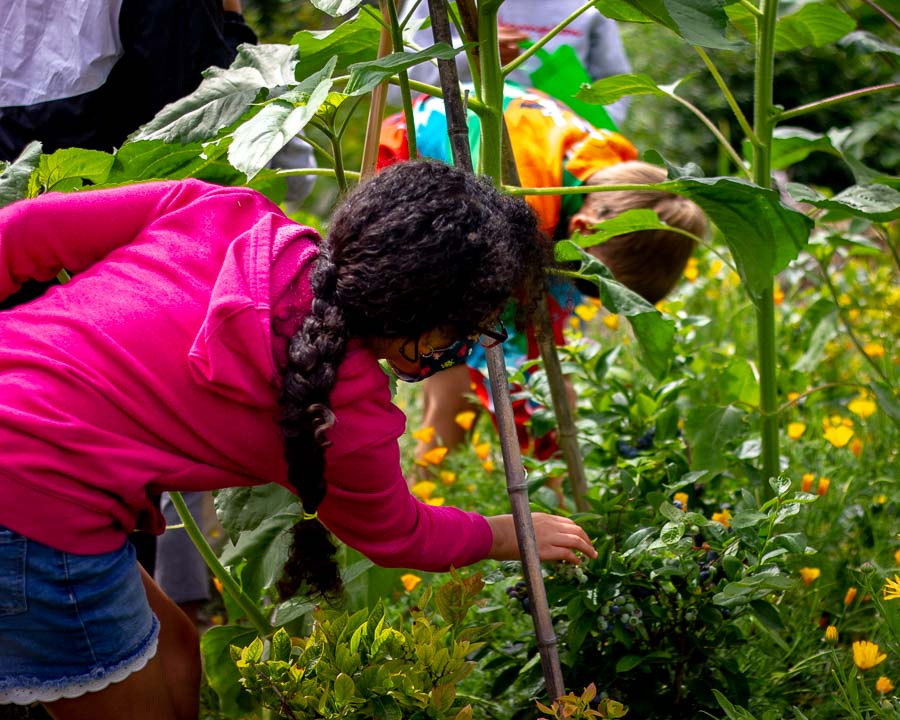
Farm, Hunger Relief & Curriculum Volunteer · Olympia, WA · April 2021 - March 2023
Led small groups in sustainable harvest of medicinal and food plants in an urban farm setting that provides culturally-relevant food to the community. Packed food boxes for hunger-relief distributed by the neighboring food bank. Supported in curriculum planning for two K - 5th grade school programs.
Learn more about these projects on Haki Farmers Collective website www.hakifarmers.org
Native Plant Salvage Foundation
Education, Fundraising & Field Volunteer · Olympia, WA · October 2020 - March 2023
Engaged volunteers with accessible green stormwater infrastructure and restoration research. Group leader during work-parties, fundraisers, volunteer education, recruitment, and appreciation. Advised on online outreach event and systems improvement.
Learn more on Native Plant Salvage Foundation's website www.nativeplantsalvage.org
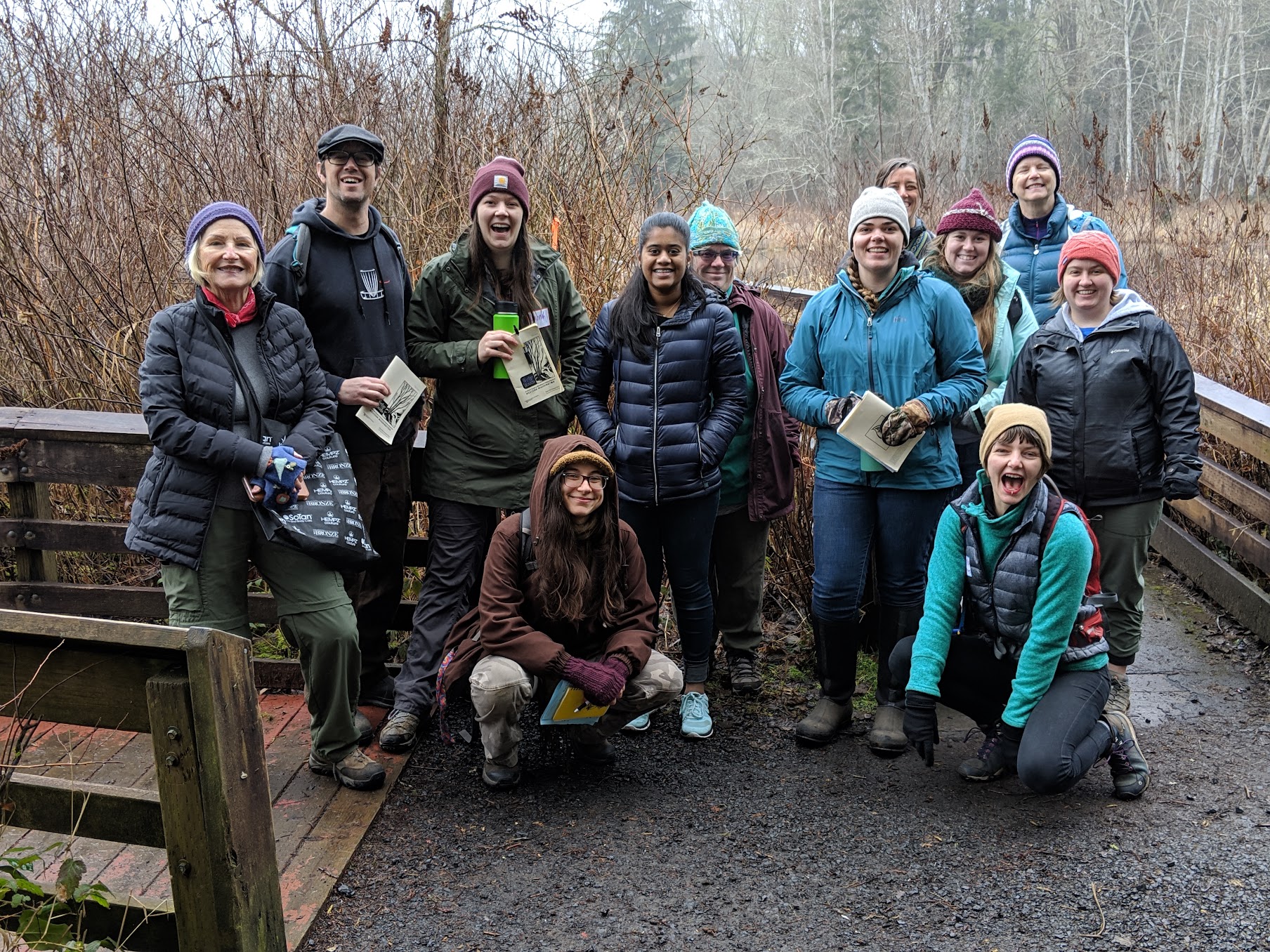
African Road, Inc.
Fundraising Campaign Volunteer · Remote · January - April 2020
Assisted executives in growing the Identification Kits for Burundi’s Batwa People fundraising campaign.
Learn more about this project on African Road's website www.africanroad.org/what-we-do/identity
Thurston County Accountability & Restitution Center Green Stormwater Infrastructure Planting
in partnership with Native Plant Salvage Foundation, Thurston County Stream Team, Thurston County & Washington State University Thurston Co. Extension
Coordinated, assisted with design, and lead volunteers in planting and subsequent upkeep events to install native and water-wise plants that buffer large amounts of stormwater from a nearby salmon-baring stream.
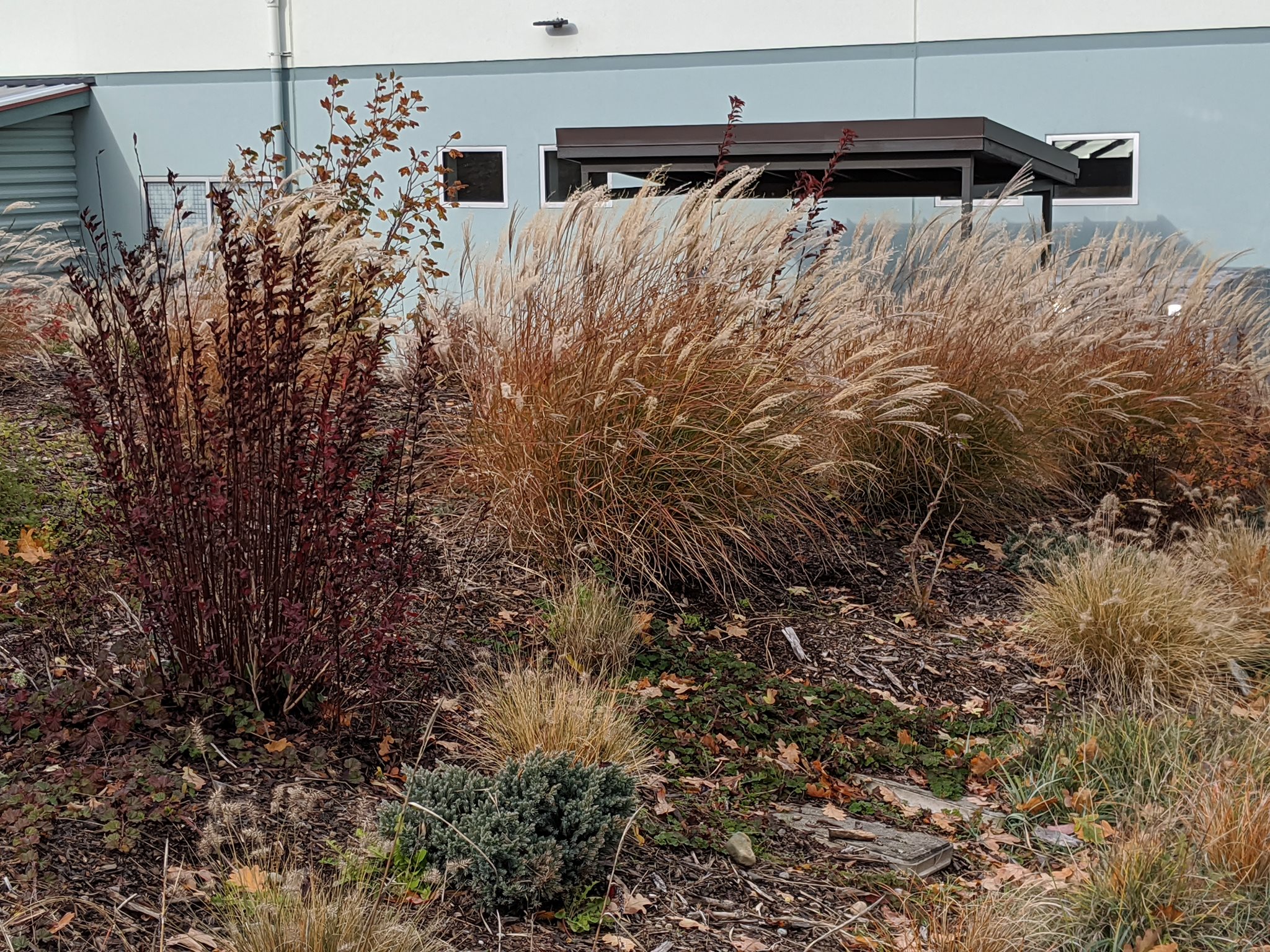
Jefferson County Rain Garden Installation
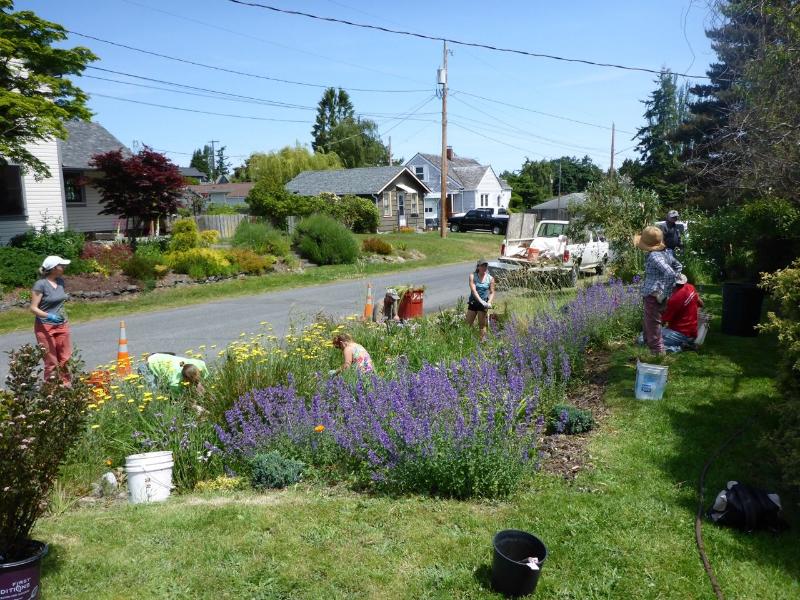
in partnership with Native Plant Salvage Foundation, Jefferson County Marine Resource Center, Northwest Straits Foundation, and Washington State University Jefferson County Extension
Lead volunteer installations. Rain gardens beautifully manage and filter stormwater while providing many other ecosystem services like feeding pollinators, mending degraded city soil, and sheltering small critters.
McLane Creek Riparian Stewardship
in partnership with Native Plant Salvage Foundation, Thurston County Stream Team and Washington State University Thurston County Extension
Coordinated, designed, and lead volunteers in trimming back plants along the trail with an educated eye and cleaning boardwalks and paths of large or slippery forest debris.
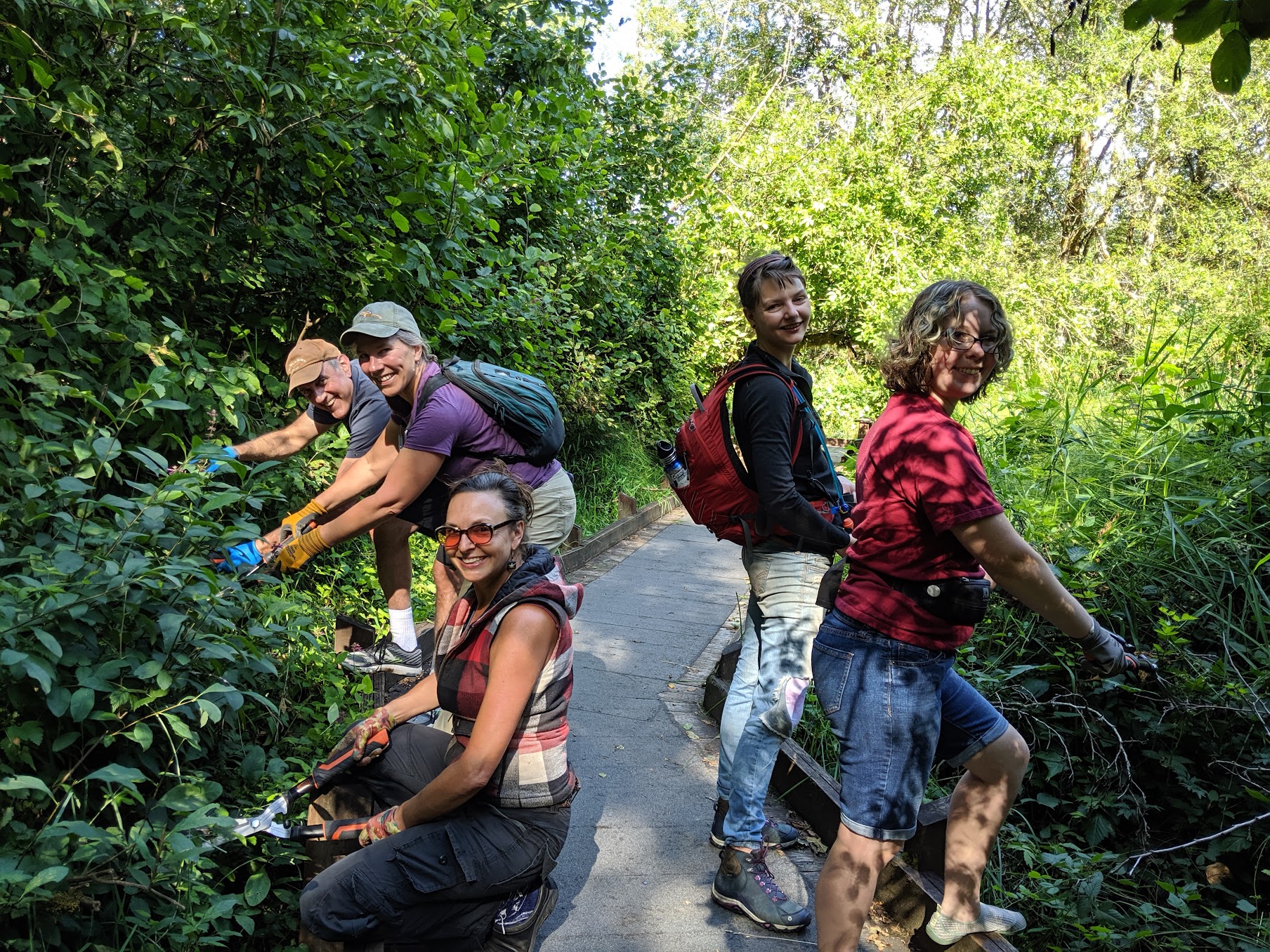
McLane Creek Riparian Restoration
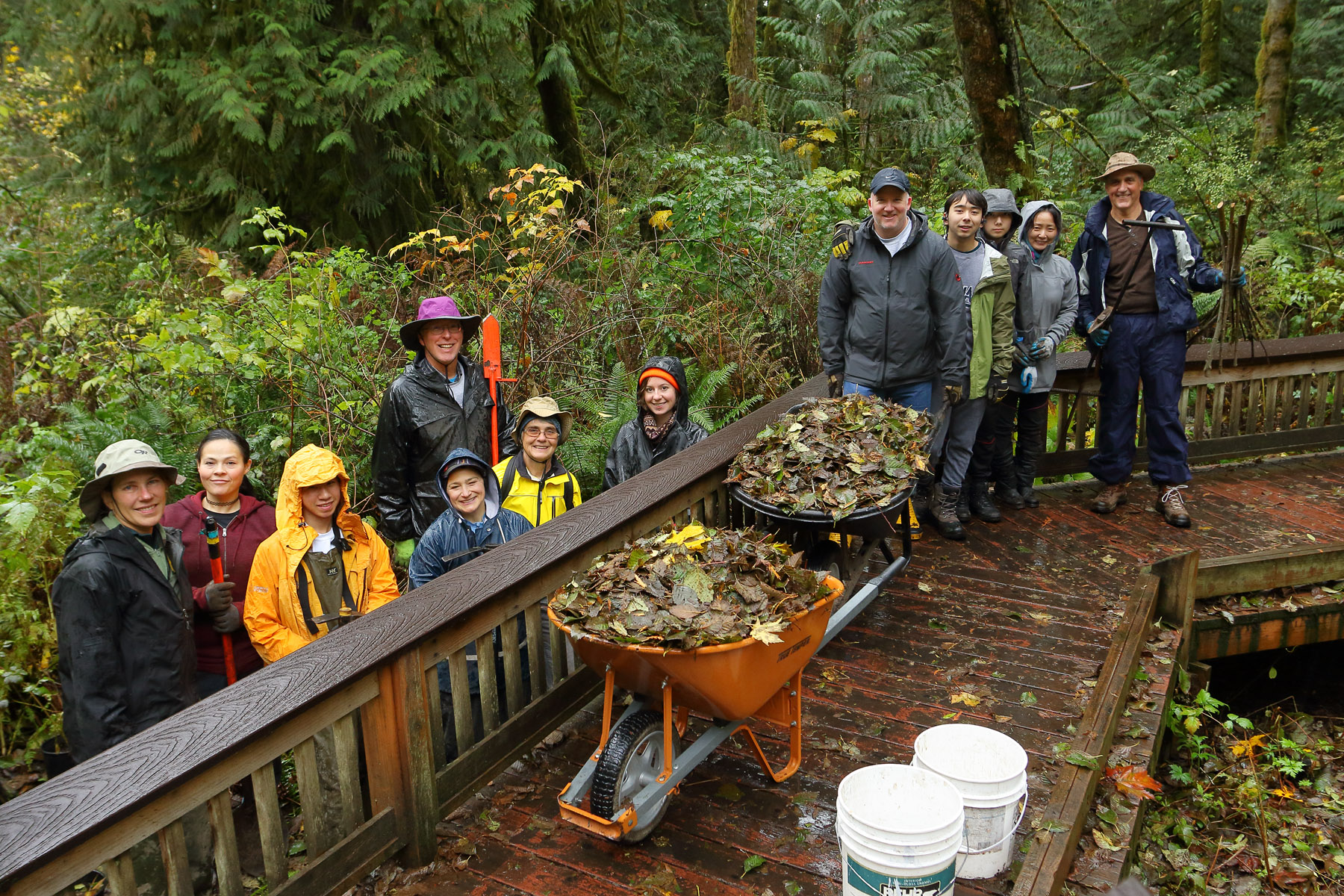
in partnership with Native Plant Salvage Foundation, Thurston County Stream Team and Washington State University Thurston County Extension
Coordinated, designed, and lead volunteer plantings to enhance habitat for salmon and other wildlife and discourage social trails to sensitive areas of the park.
Lowland Forest, Riparian, and Estuary Restoration
in partnership with Native Plant Salvage Foundation, Capitol Land Trust, and Washington State University Thurston County Extension
Coordinated, designed, and lead volunteer plantings. Native shrubs and trees protect freshwater wetlands, marine shoreline, salmon-bearing streams, and lowland forest habitat.
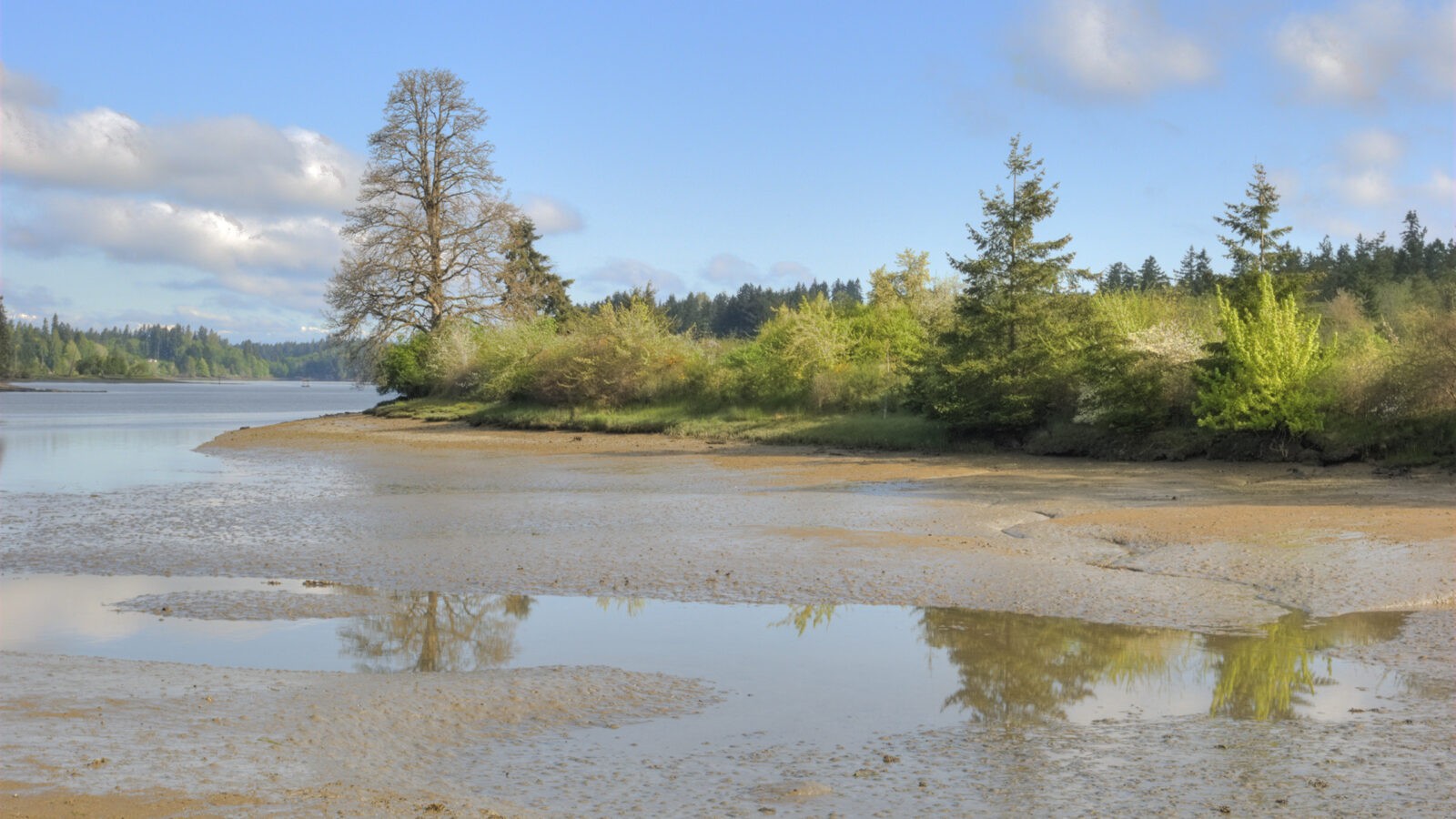
Harmony Farm Preserve
Goal: Revegetate retired agricultural land to rebuild native habitat.
Learn more about this project on Capitol Land Trust’s website www.capitollandtrust.org/conserved-lands/conservation-areas/budd-henderson-inlets/harmony-farm-conservation-easement/
Brown Preserve
Goal: protect pristine estuary and mature forest habitat for both wildlife and people to enjoy.
Learn more about this project on Capitol Land Trust’s website www.capitollandtrust.org/conserved-lands/conservation-areas/budd-henderson-inlets/brown-conservation-easement/
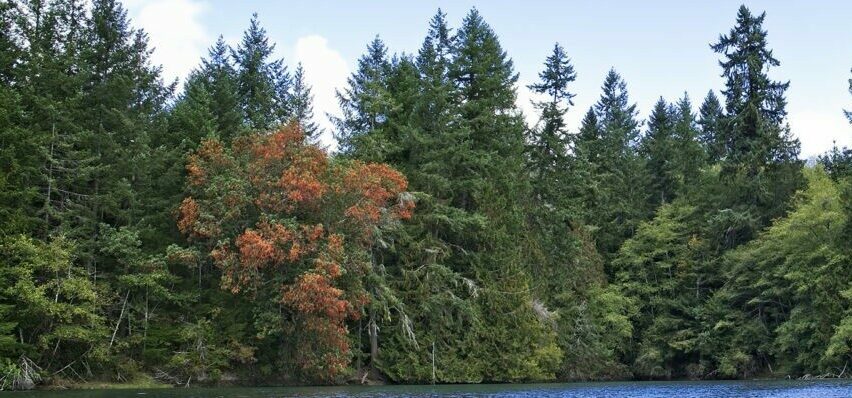
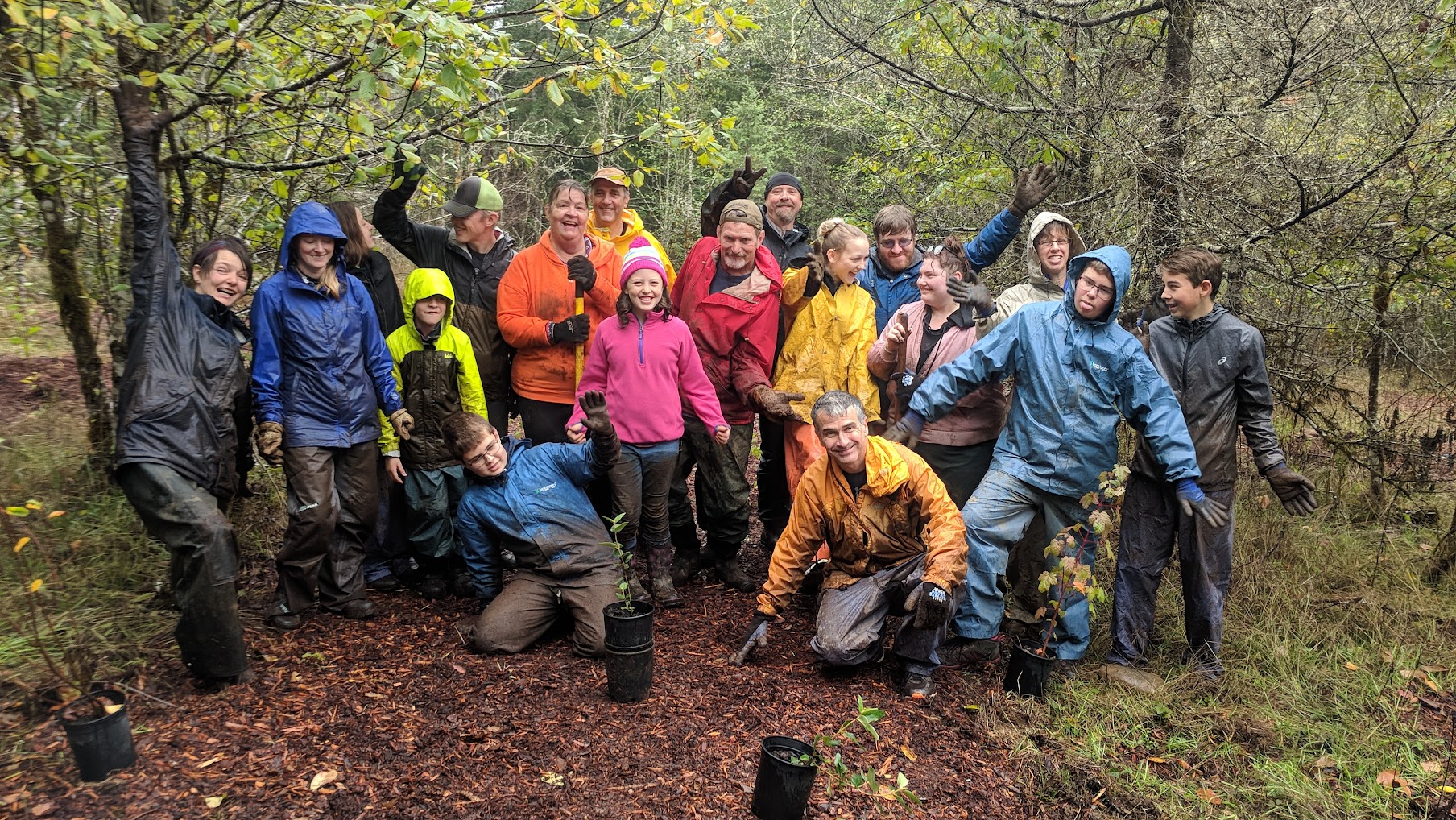
Darlin Creek Preserve
Goal: replant former Scot's Broom groves with native and habitat-forming flora.
Learn more about this project on Capitol Land Trust’s website www.capitollandtrust.org/conserved-lands/conservation-areas/black-river-chehalis-watershed/darlin-creek-preserve/
Inspiring Kids Preserve
Goal: install native wetland plants in the depths of new ponds created to enhance habitat and learning.
Learn more about this project on Capitol Land Trust’s website www.capitollandtrust.org/conserved-lands/conservation-areas/budd-henderson-inlets/inspiring-kids-preserve/
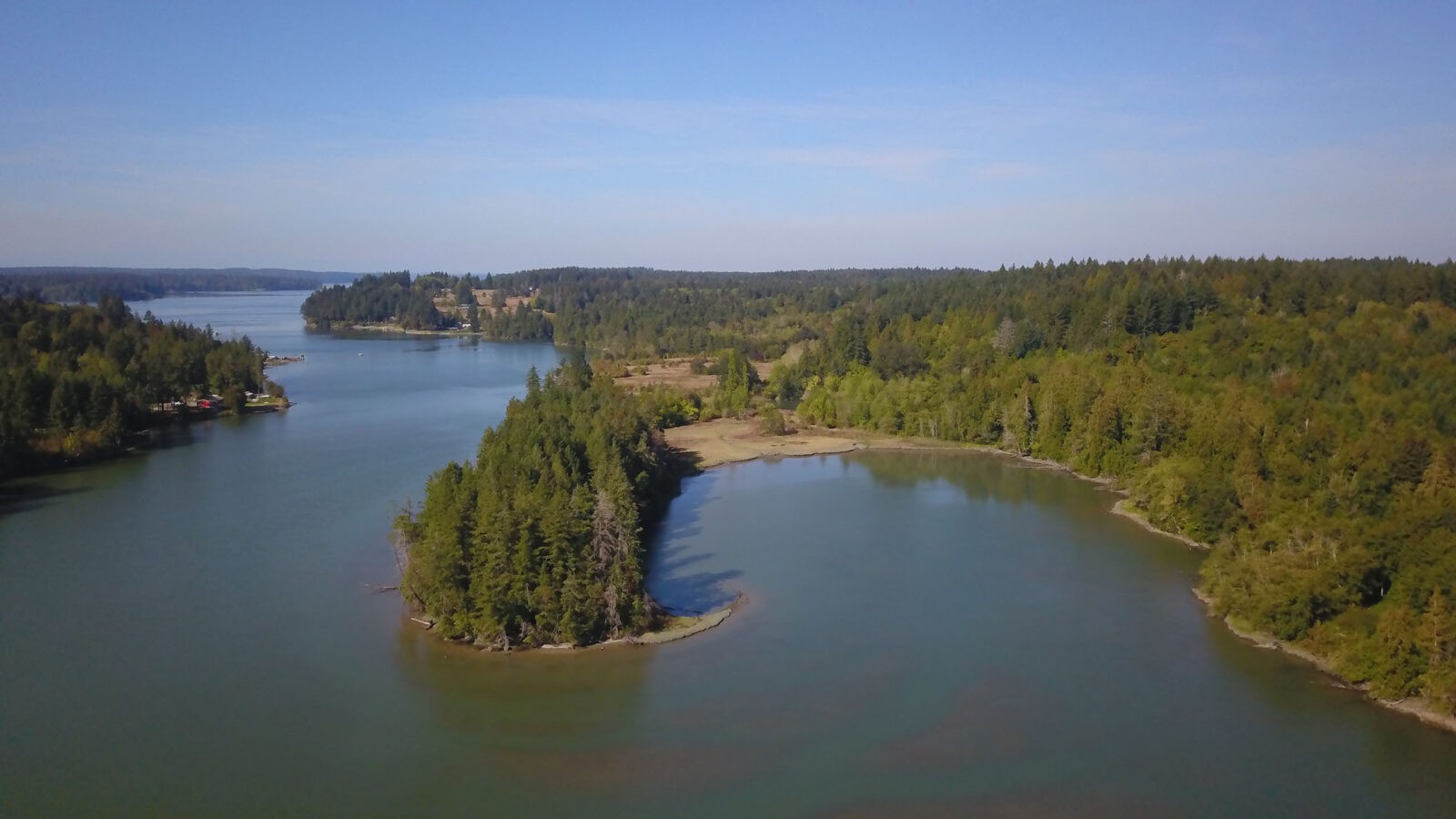
Internships
Native Plant Salvage Foundation
Nonprofit Internship · Olympia, WA · May - September 2018
Trained directly by senior staff on the organization of a small, volunteer-powered, nonprofit, focused on ecological education. Became a group leader during riparian conservation and green stormwater infrastructure work-parties. Assisted with annual meeting and other fundraising events.
Washington Park Arboretum
Education Internship · Seattle, WA · June - July 2014
Teaching assistant for an outdoor summer school following the Forest School model. Highlighted new ecosystems weekly and led learning activities in associated habitats throughout the arboretum.
Pacha Conservancy
Research Internship · Lucumayu Valley, Peru · April - June 2014
Designed and installed infrastructure for an interpretive center that included traditional Peruvian-Andes terraces, vegetable garden plot, and endemic orchid interactive area. Gained technical skills including Cloud Forest plant identification, salvage, and transplant; secondary, interview, and survey research in English, Spanish, and Quechua. Internship themes included ecological outreach and education for rural populations in Spanish and Quechua languages; montane market structures, permaculture systems, and epiphytic plant communities.
Washington Public Interest Research Group (WashPIRG)
Policy Internship · The Evergreen State College Chapter, Olympia, WA · 2014/15 Academic Year
Student-led activism for solar energy. Participated in monthly Solar Campaign meetings to organize awareness and action for new energy policy on campus and other public institutions across WA State.
Initiatives That Samantha Loves To Support Whenever Possible
Haki Farmers Collective Haki Farmers collective seeks to bolster and reincorporate traditional and inherently sustainable farming knowledge that is present in our migrant and indigenous communities. Learn more at www.hakifarmers.org/
Garden Raised (u) Bounty, GRuB Growing Healthy Food, People & Community. Learn more at www.goodgrub.org/
Native Plant Salvage Foundation Providing hands-on education to protect and conserve water resources and habitat from the South Sound prairies to the shores of the Salish Sea. Learn more at www.nativeplantsalvage.org/
Washington Native Plant Society To promote the appreciation and conservation of Washington's native plants and their habitats through study, education, and advocacy. Learn more at www.wnps.org/
African Road African Road builds long term relationships with local Changemakers, for the life, health and growth of communities in East Africa. Learn more at www.africanroad.org/